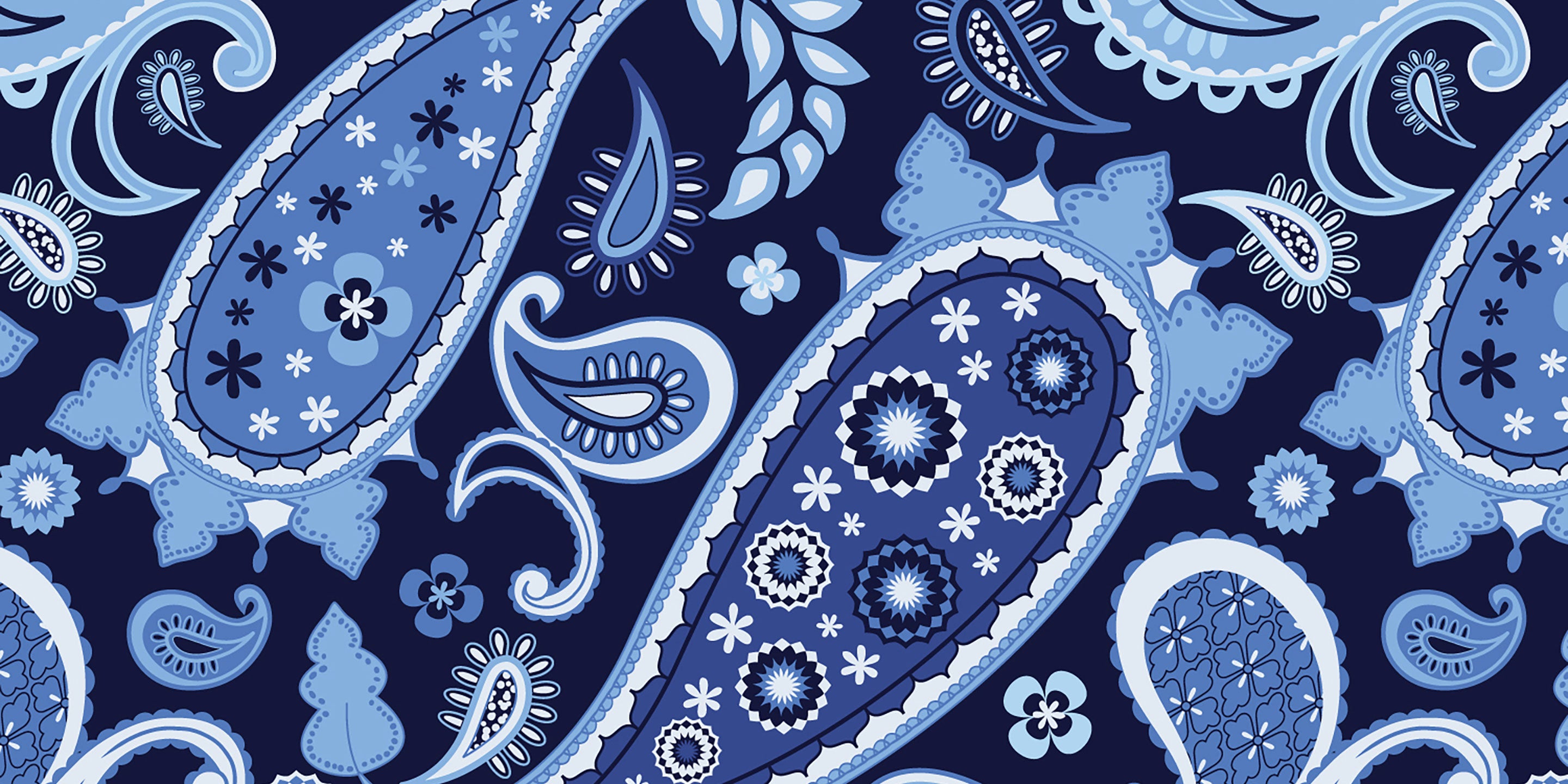Imports from The East India Company via the ‘silk routes’ brought a new textile pattern to Europe from the 18th century and following the arrival of luxurious Kashmir shawls the pattern took the continent by storm.
These shawls were soon imitated throughout Europe, notably in Wales and the town of Paisley in Renfrewshire, Scotland since 1808. From that point onwards the English term for the motif was ‘paisley’, though it became known in the United States among quilt-makers as ‘Persian pickles’ and in the Welsh textile industry as ‘Welsh pears'. At its peak from c.1850 -1860, the town of Paisley employed 6,000 weavers.
In fact, the motif associated with Paisley was called the 'teardrop of Allah' or the 'tadpole' but was probably based on the Chaldean date palm symbolising the Tree of Life. It might also be an adaptation of the yin-yang symbol used in ancient Chinese medicine and philosophy.
The name 'paisley' is not an international name for the pattern, it is called palme in France, bota in Netherlands, bootar in India and peizuli in Japan.
Many diverse cultures have used this same ‘paisley’ symbol and consider it to represent many objects including a cashew fruit, a mango or the sprouting date palm, an Indian symbol of fertility. The symbol’s shape varies dramatically in different countries from an Indian pinecone to a Russian cucumber. Paisleys also have their place in Celtic tradition. Before the Roman empire’s influence prevailed in Britain, Celtic patterns were used on many highly decorated metal objects.




 Ceylon / Sri Lanka
Ceylon / Sri Lanka Assam, India
Assam, India Japan
Japan Taiwan
Taiwan Nepal
Nepal China
China Kenya
Kenya Egypt
Egypt South Africa
South Africa


